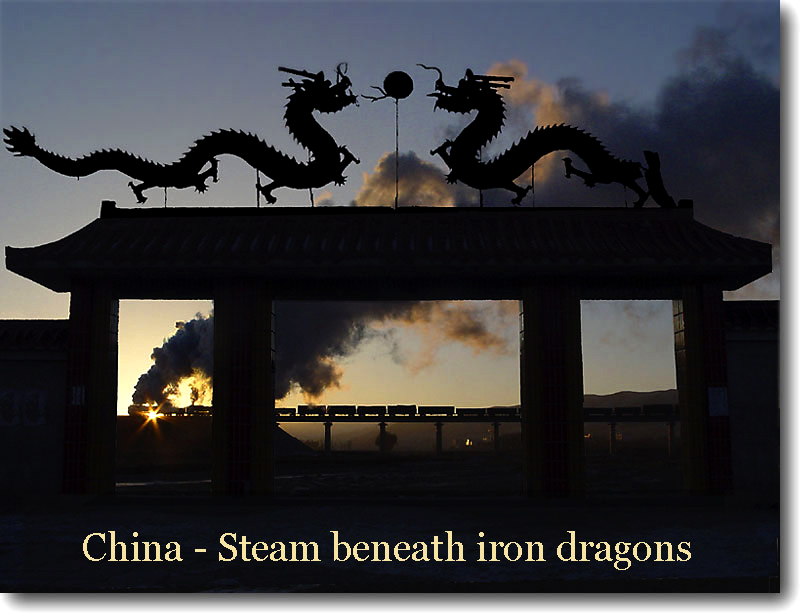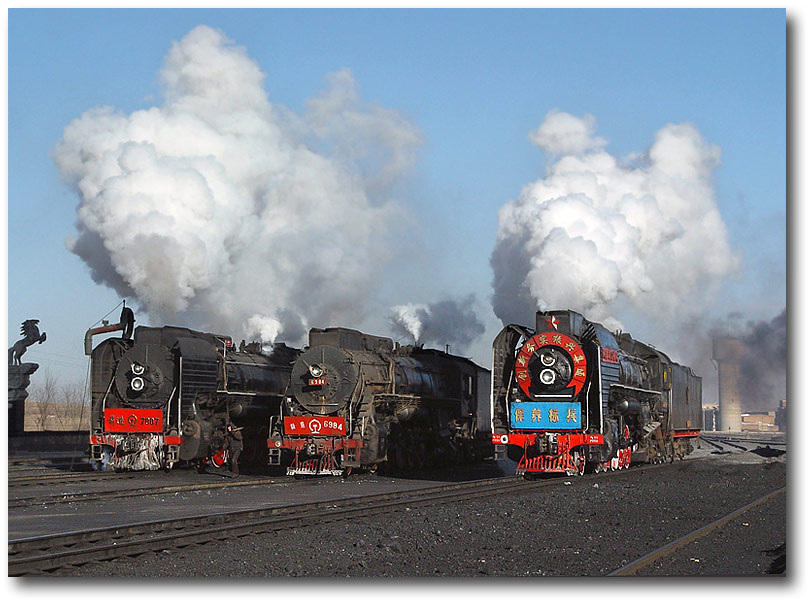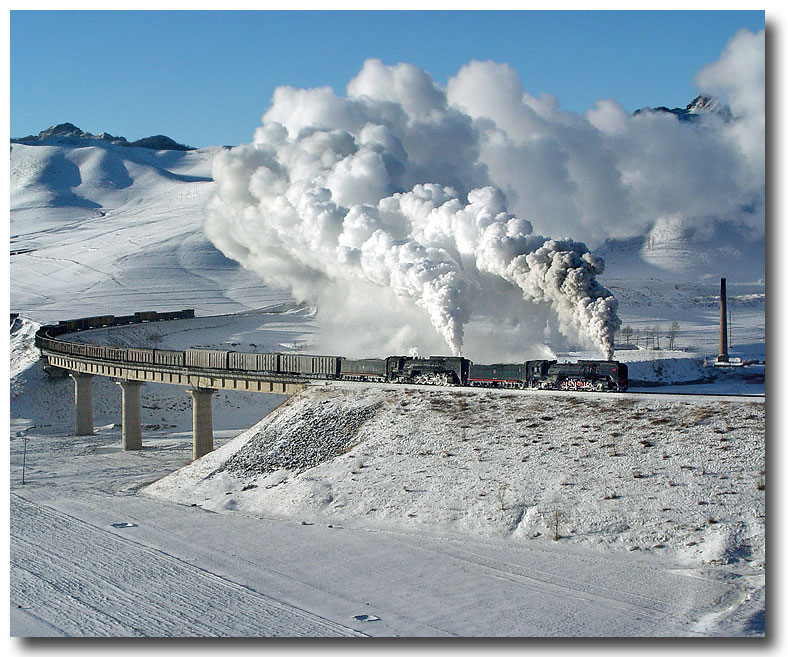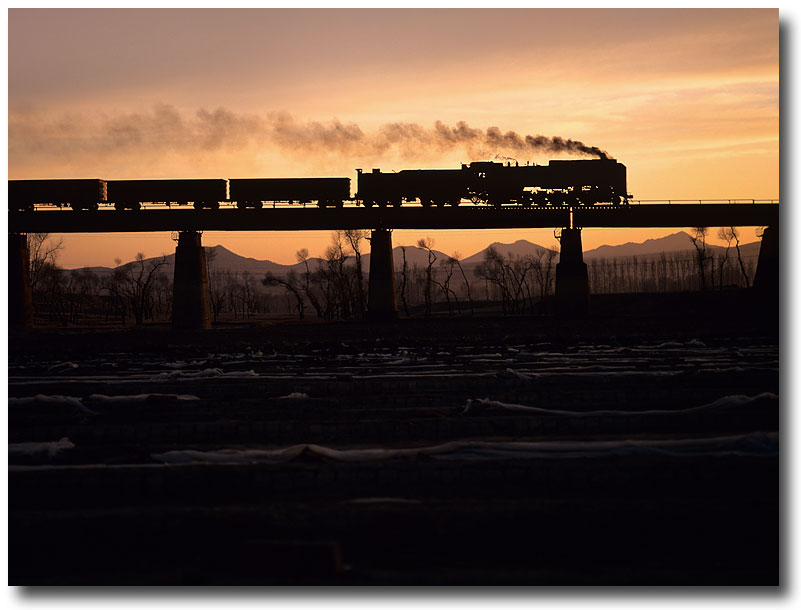|
|

|
|
Since ancient times and
even today, myriad legends of the Dragon permeate and shape Chinese
culture. Dragons are referred to as the divine mythical creature, whose
benevolence signifies greatness, goodness and blessings.
Many Chinese believe that
Dragons bring Ultimate abundance, prosperity and good fortune. Merging those two Dragons I encountered in Reshui village with a pair of
heavy working QJ's on a wonderful sunset on December 30, 2002, I wish
the same comes true for both inner Mongolia's Ji-Tong Railway, its
employees and for the Chinese railway system in general.
|
|
|
|
|

|
|
The
Ji-Tong Line was the last Mainline Railway in the world that was fully
steam operated at the turn of the century. The
Main workshop of the was located at Daban, Inner
Mongolia about halfway of the 900km line. How dfferent the QJ-engines could look like shows this picutre. The crew of the
decorated QJ to the right was praised for its excellent record on safety
and puctuality. More about Daban here. |
|
|
|
|
 |
|
At
the beginning of the new century, there was hardly any place on earth
that could match China's JiTong Railways in Inner Mongolia in terms of
steam action. Read more about it here.
|
|
|
|
|

|
|
Yebaishou
was a busy junction in northern China with three single track mainlines
radiating towards Chenge, Chifeng and Shenjang. At the foot of the
Bolouchi climb, a QJ from Chaoyang approached Yebaishou in late afternoon,
December 26, 1996. More on it here. |
|
|
|
|
|
(c) Markus Fischer, Zürich |
|
|





